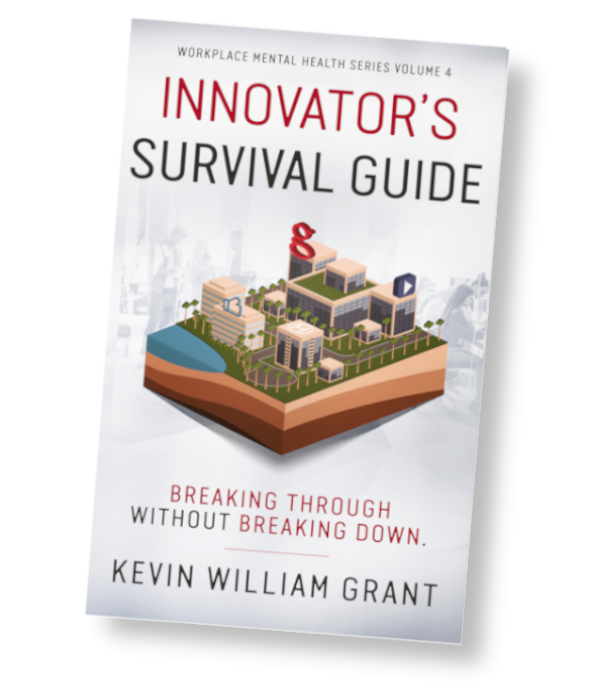Navigating Artificial Intelligence (AI) Integration in Corporate Environments
Artificial Intelligence (AI) is revolutionizing corporate structures, HR strategies, training models, and recruitment processes. Businesses embracing AI must navigate its challenges to create a harmonious, innovative workplace that enhances human potential.
Deloitte's extensive 2017 Human Capital Trends Report has shed light on the transformative role of Artificial Intelligence (AI) in today's corporate ecosystem. Garnering insights from more than 10,000 HR and business leaders spanning 140 nations, this report outlines the profound shifts occurring in organizational structures primarily attributed to the emerging influence of AI.
- Organizational Restructuring: As AI permeates the corporate world, traditional hierarchies and business models are experiencing tectonic shifts. Companies are dynamically reorganizing themselves, allowing for better adaptability and responsiveness in an AI-centric environment.
- HR Department Overhaul: Human Resources is more than just recruitment and management. With AI, HR departments are now utilizing predictive analytics for talent acquisition, employee engagement metrics, and other revolutionary practices, making HR a strategic driver of business outcomes.
- Pioneering Training Models: AI's disruption means that static employee training models are becoming obsolete. In their place, adaptive and continuous learning frameworks are emerging, ensuring that employees remain agile and updated in the face of rapidly evolving tech trends.
- Rethinking Recruitment: The traditional paradigms of hiring are being challenged. AI tools are now enabling companies to evaluate potential candidates not just based on their resumes but through sophisticated analytics that can predict cultural fit, potential, and longevity.
Josh Bersin, the founding figure behind Bersin by Deloitte, encapsulated this shift succinctly. He noted, “AI is not eliminating jobs; it is eliminating tasks of jobs and creating new jobs.” He added, “The new jobs being created are more human.” Highlighting the implications for those in highly task-oriented roles, he remarked, “Individuals with very task-oriented jobs will have to be retrained, or they’re going to have to move into new roles.”
AI's emergence is not a herald of job obsolescence but a signpost indicating job scopes' transformation. As businesses continue intertwining with AI, a metamorphosis in company organization, HR approaches, training, and recruitment practices is inevitable. Embracing this change will be the cornerstone of corporate success in the AI era.
Retaining the “Human” in Jobs Amidst the AI Surge
Human Jobs Amidst AI Integration: Amidst the rapid integration of AI into our workplaces, one truth remains steadfast: robots and algorithms cannot replicate the innate human qualities of empathy, nuanced communication, and multifaceted problem-solving. Such 'human jobs,' which require a profound understanding of emotional intelligence and interpersonal interactions, remain beyond the reach of AI.
Pulse of the Global Workforce: A survey revealed interesting dynamics concerning AI integration in the workforce. While 41% of respondents have either completely integrated or made notable advancements in assimilating AI technologies within their operations, there is a palpable apprehension at the executive level. Only 15% of global executives feel prepared to manage a workforce that blends humans, robots, and AI.
HR's Digital Transformation: Deloitte's studies indicate a significant transformation in Human Resource strategies as a response to the AI revolution. About 56% of organizations are heading towards digitizing HR, leveraging digital and mobile platforms. Even more telling is that 33% of these organizations have already incorporated AI tools to carry out HR functions.
Strategic Metamorphosis in Corporations: The influence of AI in its nascent stage and its predicted growth trajectory is prompting corporations to rethink their strategies. There's a shift in hiring priorities – organizations now focus on cultural fit and adaptability alongside traditional skill-set matching. As AI continues to redefine business landscapes, there's an inherent need for roles within these businesses to evolve in tandem. This change is also felt in training methodologies. Traditional training modules are replaced with dynamic on-the-job training to help employees navigate the AI tools integral to modern operations.
The Evolution of HR: HR departments are undergoing a paradigm shift. The age-old perception of HR being limited to recruitment and performance evaluations is changing. With AI and big data analytics, HR functions are evolving to be more efficient, aiming to provide a more tailored and improved employee experience.
Conclusion: The age of AI doesn't signify the obsolescence of the human workforce. Instead, it underscores the need to revamp job roles and HR strategies. The goal is to foster a harmonious coexistence between man and machine, ensuring a seamless employee experience in an ecosystem where full-time employees, freelancers, and contingent workers coalesce.
Creating a Collaborative Ethos in the AI Era
Implementing artificial intelligence in the corporate realm is not merely about embedding state-of-the-art tools; it's ushering in a profound shift in organizational culture. The hierarchical structures, once the mainstay of corporate setups, give way to a more egalitarian, collaborative, and team-driven ethos.
Collaborative Synergy over Hierarchical Silos:
Embedding AI isn't just about a technological shift but requires a significant cultural and structural transformation. Organizations find that top-down, compartmentalized approaches could better suit AI integration's agile and cross-functional nature. It demands fluid teams, where frontline operators, product experts, and engineers collaborate closely, breaking silos.
Ian Crosby, leading the helm at Bench, encapsulates this evolving dynamic. His emphasis on continuous and close-knit collaboration signifies the shift from the traditional model of secluded product development to one that's dynamic and iterative. Instead of crafting solutions in isolation and imposing them on the frontline teams, the process is now interactive and cyclical. Units co-create answers, iterate them in real time and ensure they remain relevant to frontline demands.
Frontline Empowerment:
This new collaborative culture isn't just about optimizing AI implementation; it's also about empowering those at the frontline. The close involvement of frontline teams in the development process ensures that the AI tools are tailored to address real-world challenges and practical needs. This alignment enhances operational efficiency and boosts team morale, as members feel more valued and involved.
Cultivating a Learning Mindset:
Given the dynamic nature of AI and its vast potential applications, organizations are fostering a culture of continuous learning. AI integration isn't a one-time project but an ongoing journey. The collaborative approach, as highlighted by Crosby, underscores the importance of teams learning from each other, iterating solutions, and being open to evolving the tools per the changing demands of service delivery.
The AI era compels companies to look beyond mere technological integration. It's a holistic shift, reshaping organizational structures, team dynamics, and operational ethos. Organizations like Bench are exemplars, showcasing that for AI to augment business operations truly, it necessitates a culture where collaboration, continuous learning, and frontline empowerment are paramount.
Navigating Organizational Evolution: Embracing Multidisciplinary Teams
As technological paradigms evolve, traditional organizational structures become increasingly obsolete. In response, progressive enterprises gravitate toward a more fluid, decentralized, and multidisciplinary model. This trend is echoed in Deloitte's 2017 Human Capital Trends, where nearly a third of respondents affirmed the shift towards a team-centric approach designed to foster adaptability and a continuous learning ethos amidst the whirlwind of technological changes.
Key Drivers Behind the Transition:
- Agility and Speed: Organizations must respond quickly in a fast-paced digital era. Traditional top-down structures often come with bureaucratic layers that can impede swift decision-making. Multidisciplinary teams, in contrast, are leaner and can act promptly.
- Diverse Perspectives: Multidisciplinary teams bring together individuals from varied backgrounds and expertise. This diversity sparks creativity, leading to more holistic solutions that account for multiple facets of a problem.
- Learning and Adaptability: In a landscape where skills and tools become obsolete rapidly, continuous learning becomes vital. Team-centric structures facilitate shared learning, with team members often cross-training each other, leading to a more resilient workforce.
- Enhanced Collaboration: By breaking silos, multidisciplinary teams encourage open communication and cooperation. Solutions are co-created, fostering a sense of collective ownership and mutual accountability.
The Prudent Path to Transformation:
Ian Crosby points out that a shift in organizational structure is challenging, especially for established corporations with deeply ingrained hierarchies. Such a seismic shift needs a measured approach.
Starting with a more minor pilot team offers several advantages:
- Iterative Testing: Small groups can prototype the multidisciplinary approach, refining processes, roles, and collaboration methods before a broader organizational roll-out.
- Risk Mitigation: By starting small, companies can gauge the success and challenges of the new structure in a controlled environment, allowing them to preempt potential roadblocks.
- Cultural Transition: A minor team can more easily cultivate the desired culture of collaboration, adaptability, and continuous learning. They become the torchbearers as they succeed, setting the precedent for the broader organization.
Conclusion: As businesses globally grapple with the challenges and opportunities posed by rapid technological advances, the move to multidisciplinary teams offers a promising solution. However, like any significant change, it requires strategic foresight, patience, and a willingness to learn and adapt along the journey.
The Quintessential Modern Worker: Embracing Adaptability
In the rapidly evolving landscape of the 21st-century workplace, where Artificial Intelligence (AI) and other emerging technologies are altering the very fabric of industries, traditional skill sets alone are no longer the gold standard for hiring. As companies plunge into uncharted waters, the ability to adapt, learn, and innovate is proving to be a linchpin of success.
Adaptability matters for the following reasons:
- The Pace of Change: The blistering pace of technological advancement means that the tools, platforms, and even the industries of today might be obsolete tomorrow. Employees who are agile in their learning and can pivot as needed will ensure that companies remain competitive.
- Continuous Learning: Given the speed at which new tools and methodologies emerge, employees must be lifelong learners. Those who can self-educate, upskill, and reskill will be invaluable.
- Innovation & Creativity: There must be a pre-defined roadmap as we navigate the unexplored territories of AI and related tech. Employees who can think outside the box, experiment, and drive innovation will be at the forefront of creating the next big thing.
- Embracing Failure: In pioneering work, only some things will succeed. It is crucial to accept failure, learn from it, and iterate. As the quote suggests, humility in acknowledging mistakes and the resilience to bounce back is a trait organizations value more than ever.
Recognizing the importance of adaptability, progressive companies are reshaping their hiring strategies:
- Behavioral Interviews: More than just assessing technical know-how, interviews delve deep into a candidate's past experiences, demonstrating adaptability, resilience, and continuous learning.
- Scenario-based Assessments: Potential hires might be presented with hypothetical, future-oriented scenarios to assess how they handle uncertainty and change.
- Cultural Fit: Companies are placing a premium on cultural fit to ensure that new employees align with the organization's values of flexibility, innovation, and openness to change.
- Soft Skills Evaluation: Emotional intelligence, critical thinking, and collaboration are some soft skills that are becoming as crucial as technical expertise. They often serve as indicators of an individual's adaptability.
Conclusion: The future of work continues to be molded by AI and technological advancements, and the workforce's ability to adapt will be its most potent asset. Organizations are recognizing this paradigm shift and are prioritizing adaptability not just as a desirable trait but as an essential one.
Balancing Humans and AI: The Blueprint for a Future Synergistic Workforce
The accelerating evolution of Artificial Intelligence (AI) is redefining the contours of the professional landscape. Rurik Bradbury from LivePerson aptly highlights an essential caveat in the AI discourse: its present limitation in deciphering the intricacies of human intent. As we strive towards an AI-centric future, the real challenge for organizations lies in crafting an astute integration strategy for humans and machines. Delving deeper, here's an elaborative guide on strategizing this fusion.
The Case for Human-Centric Roles: Certain roles are irrefutably best suited for humans, especially those that mandate nuanced decision-making, emotional intelligence, creativity, and strategic envisioning. Consider executives setting company visions, strategists forecasting market movements, or creative directors conceptualizing a groundbreaking campaign. The human mind's uncanny ability to couple data-driven insights with emotional resonance and intuition remains unparalleled by machines. At its essence, while AI can churn out numbers, it's the human perspective that breathes life and context into these numbers.
The Realm of Pure AI: An entire segment of tasks screams efficiency, consistency, and volume. Tasks like crunching enormous data sets, performing repetitive calculations, or addressing routine customer queries fall squarely into AI's court. Machines outshine humans due to their relentless operational stamina, unfazed accuracy, and data processing speed. The allure of a 24/7 operating cycle without dips in efficiency makes AI indispensable for such roles.
The Emergence of the Cyborg – AI Augmented Humans: Nestled between purely human and machine realms is the hybrid domain, where AI acts as a force multiplier for human capabilities. Picture a physician using AI to diagnose better a rare ailment or a financial analyst harnessing AI's predictive prowess to forecast market trends. While AI lays the analytical groundwork, it's the human touch that weaves in contextual relevance, ensuring that decisions aren't just accurate and possess a holistic dimension.
Blueprint for Harmonious Integration: A seamless merger of humans and AI demands a meticulous strategy. First, there's a need for a rigorous skill mapping exercise to demarcate human-exclusive tasks from those ripe for automation or augmentation. Diving headfirst into AI integration is optional. An iterative, phased approach offers employees the dual benefit of smoother transitions and acclimatization time.
However, integration isn't just about deployment; it's about evolution. Investing in robust training and reskilling initiatives ensures that the human workforce isn't just coexisting with AI but thriving alongside it. A symbiotic feedback loop, where humans and machines evolve through mutual learning, can exponentially amplify the collaborative output.
Furthermore, ethical considerations hover prominently in this intertwining of human and machine capabilities. As machines assume more prominent roles, maintaining a vigilant lens on transparency, fairness, and accountability becomes imperative.
Conclusion: Envisioning the future as a battleground of humans vs. machines is a skewed perspective. The horizon beckons a collaborative tapestry where humans and machines merge, each amplifying the other's strengths. The task at hand is not just to harness the efficiencies of this synergy but to sculpt a future workforce that embodies innovation, adaptability, and cohesiveness.
Artificial Intelligence, Management, and Organizations
Artificial Intelligence (AI) has transcended from the realms of science fiction into a tangible force driving transformation across industries. Its integration within the intricate frameworks of management and organizational structures is forging a new paradigm in business operations. Here's an in-depth analysis of this amalgamation.
AI's Reinvention of Management Dynamics:
- Enhanced Decision-making: Leveraging AI's unparalleled data analytics capabilities, managers can now make decisions grounded in rich data. The prowess of predictive analytics affords insights into impending market trajectories, refining managerial strategy formulation.
- Optimal Resource Deployment: From ensuring raw materials are employed judiciously to deploying human capital efficiently, AI tools are ushering in a new era of resource optimization.
- Real-time Operational Oversight: The immediacy with which managers can gauge operational performance, thanks to AI, ensures any discrepancies are addressed promptly, fostering a seamless and efficient operational flow.
Redefining Organizational Constructs with AI:
- Embracing Horizontal Hierarchies: AI's propensity to automate several middle-management functions pushes organizations towards flatter structures, enabling nimble decision-making and heightened adaptability.
- Nurturing Specialization: As AI absorbs mundane tasks, it inadvertently allows the human workforce to dive deeper into roles demanding creativity, strategic insight, and intricate problem-solving.
- Shifting Cultural Paradigms: The AI revolution is not just technological but cultural. Organizations are being nudged towards espousing values centered around perpetual learning, technical adeptness, and adaptability.
Manifestations in the Business Ecosystem:
- Revolutionizing HR: Giants like Unilever harness AI and might streamline recruitment, from preliminary screenings to nuanced video interview analyses.
- Optimizing Supply Chains: Organizations, with Amazon leading the charge, employ AI to finetune demand forecasts, ensuring inventory efficiency and minimizing waste.
- Elevating Customer Support: AI-driven chatbots, available round the clock, are transforming the customer support landscape, setting new standards in responsiveness.
Managerial Hurdles in the Age of AI:
- Bridging the Skill Chasm: The AI evolution brings forth the imperative of workforce upskilling. The onus is on managers to orchestrate regular, comprehensive training interventions.
- Ethical Quandaries: The automation of decision-making frameworks raises pertinent questions surrounding the ethics of AI, especially concerning bias, fairness, and transparency.
- Ensuring AI Dependability: AI's efficacy hinges on the quality of data it's nurtured on. This necessitates managers to prioritize data integrity and be vigilant, stepping in when AI stumbles.
The Impact of AI on Organizations
The Revolutionary Impact of Artificial Intelligence on Organizational Dynamics
Artificial Intelligence (AI) is no longer an emerging technology but a dominant force, fundamentally reshaping the structure and strategies of modern organizations. Let's explore the multifaceted ways in which AI has influenced various aspects of business:
The Redistribution of Power within Organizations:
- Decision-making Autonomy: The integration of AI in business processes means that some decisions, traditionally made by human experts, are now being taken over by machines. These decisions, rooted in extensive data analytics, sometimes offer a perspective that contrasts with human intuition, leading to a shift in the decision-making locus within organizations.
- Emergence of AI Powerhouses: With the AI revolution, specific departments or units, particularly those leveraging AI for strategic advantages, are emerging as critical centers of influence. Their role in driving revenues or achieving significant cost savings has elevated their importance.
- Rise of AI Experts: The pivotal nature of AI in organizational structures means those who master its nuances — the AI specialists — are gaining considerable clout. Their expertise is not just operational but often extends to guiding strategic decisions.
Rethinking Decision-making Frameworks:
- Automated Delegation: Many routine decisions, especially those involving extensive data, are now entrusted to AI. This shift allows human experts to address challenges of higher complexity.
- Speed in Decision-making: AI's unparalleled data processing capabilities facilitate swift decisions. In sectors like finance, this rapidity can be a game-changer.
- Ensuring Oversight: Even as AI takes the reins of decision-making, organizations recognize the importance of human oversight. Regular reviews ensure AI decisions align with broader company ethos and objectives.
Operational Cost Efficiencies and Service Enhancement:
- Streamlined Processes: AI's efficiency in optimizing workflows and minimizing human errors results in substantial cost savings.
- Personalized Customer Experiences: Leveraging AI for customer interactions offers a level of personalization previously unattainable, leading to enriched customer experiences.
- Preemptive Maintenance Strategies: AI's predictive analytics capabilities can forecast maintenance needs for organizations focusing on machinery or infrastructure, leading to cost savings and uninterrupted services.
Transformation in Employee Roles and Responsibilities:
- Emergence of New Roles: As AI assumes routine tasks, it paves the way for employees to transition to roles emphasizing creativity, strategy, and the human touch.
- The Imperative of Continuous Learning: The evolving AI landscape necessitates that employees consistently upskill, adapting to new tools or transitioning to roles that involve managing or finetuning these systems.
- Human-AI Collaborative Roles: Some roles are evolving to emphasize collaboration between humans and AI. For instance, medical practitioners are now working alongside AI tools for enhanced diagnostic accuracy.
The Implications of Automation on Employment:
- Potential Downsizing: The automation capabilities of AI render specific repetitive jobs obsolete, leading to possible downsizing in these areas.
- Shifting Recruitment Paradigms: While automation may limit specific roles, there's a concurrent surge in demand for AI strategists, data scientists, and parts bridging technology and traditional business functions.
- Navigating Ethical Dilemmas: The prospect of AI-induced downsizing brings forth profound ethical and societal challenges. The onus is on organizations to balance efficiency goals and broader societal responsibilities.
In conclusion, while AI promises transformative benefits to organizations, it has challenges. The hallmark of the organizations of tomorrow will be their ability to weave AI into their operational fabric while maintaining an unwavering commitment to adaptability, ethics, and a human-centric ethos.
Power Shifts and Reassignment of Decision-making Responsibility
The rise of AI in organizations has introduced a new dynamic to the balance of power. In traditional organizational structures, power often resided with those with knowledge, expertise, or control over critical resources. With AI systems increasingly being the guardians and processors of vast knowledge, the traditional dynamics are bound to shift.
- AI as a New Power Center: With the capacity to process large datasets rapidly, AI can provide insights faster and often more accurately than human experts. This ability can shift power to those who control or have exclusive access to these AI systems.
- Empowerment of Decision-makers: Leaders and decision-makers who utilize AI-backed insights might have a stronger foundation for their decisions. I am giving them a distinct advantage and possibly consolidating more decision-making power.
- Marginalization of Traditional Roles: As AI takes over certain functions, roles that once held significant sway in an organization might wane influence. This can lead to a sense of displacement among employees in these roles.
AI's integration into the decision-making process changes how decisions are made and who (or what) makes them.
- Automating Routine Decisions: As seen with American Express, routine decisions such as expenditure authorizations can be automated, making the process faster and often reducing errors. This increases efficiency and moves the decision-making responsibility from humans to machines.
- Complex Decision-making with AI: In sectors like banking and finance, AI systems, like neural networks, are being employed for difficult decisions such as credit analysis. These systems can quickly analyze vast amounts of data and identify patterns or risks that might be challenging for a human analyst to spot.
- Transparency and Trust: One of the concerns with the reassignment of decision-making to AI is the 'black box' nature of some AI systems. If the rationale behind decisions needs to be clarified, it can lead to trust issues. Corporate secrecy compounds this, as employees and customers may feel uneasy about decisions made by a mysterious algorithm without transparency.
- Ethical Implications: Who is responsible when an AI makes a decision that leads to adverse consequences? The ethics of decision-making by AI is a growing concern. Organizations must address the boundaries of AI decision-making and establish clear accountability structures.
While AI promises efficiency, accuracy, and scalability in decision-making, organizations must carefully navigate the changes it brings. This involves balancing the benefits of automation with the need for transparency, trust, and ethical considerations.
The Impact of Management on AI
Leadership and management play a pivotal role in any transformation, especially one as pervasive as adopting AI. Their decisions, priorities, and level of commitment can be the difference between a transformative success and an expensive misadventure.
Championing AI in the Organization:
- Vision Setting: A champion, especially at a senior management level, can set the strategic vision for AI, helping the organization understand its transformative potential.
- Overcoming Resistance: As with any new technology, AI can face resistance due to perceived threats to jobs, the existing way of doing things, or simply the fear of the unknown. A strong champion can address concerns, dispel myths, and build a positive narrative around AI.
- Feedback Loop: Champions are not just proponents; they also listen. They must understand ground-level challenges, fine-tune strategies, and ensure AI adoption benefits all stakeholders.
Resource Provision and Its Importance:
- Allocating Budgets: AI implementation can be resource-intensive, particularly at the outset. Budget allocations can cover everything from acquiring the right technology to training the workforce. Adequate funding signals the organization's commitment and ensures smooth AI transformation.
- Talent Acquisition and Development: One of the most critical resources is talent. As AI technologies evolve, there's an increasing need for skilled professionals to design, implement, and manage these systems. Management's willingness to hire or train the necessary talent is vital.
- Time Allocation: AI transformations aren't overnight ventures. They require time, not just in terms of implementation but also adaptation. Management must provide teams with the time to understand, adapt to, and optimize AI systems without the constant pressure of immediate returns.
- Infrastructure Support: Beyond people and budgets, AI systems may need new infrastructure—hardware for data centers, cloud storage solutions, high-speed data processing systems, and more. Providing this infrastructure is critical to ensuring that AI systems run smoothly and effectively.
The impact of management on AI adoption is profound. While the technology itself is critical, its implementation can continue with the proper support, vision, and resources management provides. Successful AI integration requires a combination of technology, culture, and leadership, with administration as the crucial bridge between them.
Integration of AI into Business Infrastructure
As businesses propel into the future, integrating Artificial Intelligence (AI) into their overarching strategy becomes increasingly significant. However, the introduction and functioning of AI cannot be viewed in isolation. Here's how AI intertwines with broader information systems:
AI as a Component in Business Ecosystems: The presence of AI will not just be standalone systems. Instead, they will act as integral components within more extensive business infrastructures, often leading to complex implications related to costs and benefits.
The Crucial Role of Information Systems Planning: This process is a linchpin in shaping the nature and extent of AI systems within a workplace. It:
- Aligns Tech with Organizational Needs: Ensuring digital systems resonate with the organization's requirements.
- Guides AI System Development: Assisting organizations in pinpointing the specific AI frameworks they wish to cultivate.
- Allocates Funding: Setting aside appropriate budgets for AI projects.
- Ensures Seamless Integration: Melding AI with current and envisioned databases, data systems, reporting mechanisms, and other tech-based decision support tools.
- Adopts a Top-Down Methodology: This begins with an outline of business objectives, formulating ideal technological blueprints to buttress these goals.
Widespread Deployment in Ambitious Organizations: Entities that harbor a bold vision regarding AI will not limit its deployment. Instead, they will weave AI technology throughout their operational threads, maximizing its potential.
The Holistic Contribution of AI: An AI system's effectiveness seldom concerns its inherent capabilities. Its true potency lies in how seamlessly it amalgamates with:
- Hardware: The tangible devices and machinery.
- Software: The programs driving the operations.
- Policies and Procedures: The guiding rules and operational pathways.
- Refined Business Processes: Aligning with improved organizational methods and strategies.
Conclusion: The future heralds an era where AI is not just an add-on but an embedded facet of business architecture. Its integration, management, and utilization will determine the trajectory of business success in the digitally-infused landscape.
The Symbiotic Role of AI in Cybersecurity's Future
Artificial Intelligence (AI) is rapidly emerging as a linchpin in fortifying cybersecurity measures in the contemporary digital landscape. With cybercriminal activities escalating, more than banking on human-driven defenses appears impractical and perilously inadequate.
The Pervasive Threat of Cybercrime: The illicit digital underworld has mushroomed into a colossal illegal economy, siphoning an estimated $445 billion annually. This staggering figure denotes financial heists and the breach of over a billion personal records containing sensitive data such as credit card details and health histories.
The Organized Nexus of Cybercriminals: An alarming 80% of cyber incursions are orchestrated by well-coordinated criminal syndicates that operate with disturbing sophistication. These malefactors seamlessly exchange invaluable intelligence, tools, and tactics, countering them an increasingly Herculean challenge for cybersecurity professionals.
The Widening Talent Gap: As cyberattacks increase, cybersecurity faces a glaring talent shortfall. An anticipated 1.5 million security-related positions will remain vacant by the decade's end, further compounding the critical situation.
AI: The Augmented Eye in Cybersecurity: While human expertise remains indispensable, AI stands out as a force multiplier in cybersecurity. The emerging field of cognitive security is gaining traction among experts, with IBM's recent survey revealing that nearly 60% of professionals are optimistic about its potential to thwart cyber adversaries. Furthermore, there's an anticipated surge in the adoption of AI-enabled security measures, projected to rise from 7% to 21% within the next two to three years.
The evolving digital “threat-scape” necessitates a harmonized approach that synergizes human insight with AI's analytical prowess. Rather than seeing AI as a replacement, the future will be about a seamless amalgamation of human expertise and machine intelligence to ensure a resilient digital realm.
Leveraging AI in Navigating the Sea of Security Data
In our data-driven era, organizations grapple with vast amounts of data daily. The sheer volume poses both opportunities and challenges, especially in the domain of cybersecurity. With the surge of data, the need for intelligent mechanisms to sift through and make sense of it has never been more pressing.
The Overwhelming Data Deluge: A typical organization confronts over 200,000 security-related events daily. The ramifications of this deluge are immense, both in terms of financial outlay and operational efficiency. An eye-watering annual expenditure of $1.3 million is incurred by enterprises solely on addressing false positives, translating to almost 21,000 hours of potentially productive time lost.
AI's Role in Deciphering the Data Maze: Artificial Intelligence is poised to be a game-changer in managing this flood of data. With advanced natural language processing capabilities, AI can seamlessly interpret the human language embedded in unstructured sources such as articles, blogs, videos, reports, and alerts. Its ability to discern patterns, often too intricate for human detection, and subsequently offer remediation strategies based on these insights is transformative.
The Challenge of Unstructured Data: Historically, unstructured data has been the bane of cybersecurity efforts. It constitutes 80% of all data, making it a potential goldmine for vulnerabilities and threats if left unchecked. Without the analytical prowess of AI, this vast repository remains a significant blind spot in cyber defense strategies.
The Future: AI-Powered Proactive Cyber Defense: AI doesn't just enhance cybersecurity by identifying existing vulnerabilities; it's ushering in a proactive defense paradigm. As AI systems continually refine their learning, they can more accurately discern between benign system anomalies and genuine cyber threats. This precision promises a future where security analysts can focus on real threats rather than be bogged down by endless false alarms.
The evolution of AI is not merely about tech advancement; it's a crucial ally in fortifying cyber defenses in our increasingly interconnected world. By illuminating the once murky waters of unstructured data, AI ensures that organizations can harness data's power without being overwhelmed by its challenges.
The Synergy of Humans and AI in Cybersecurity
In the ever-evolving landscape of cyber threats, the traditional approach of security analysts manually scouring the internet for solutions to identified attacks can be time-consuming and often yields ambiguous results. The future of cybersecurity, therefore, rests on the confluence of human expertise and the analytical prowess of AI.
AI: The Game-Changer in Rapid Threat Response: Once a cyber threat is flagged, addressing it swiftly is paramount. Here, Artificial Intelligence can shine by rapidly parsing through massive volumes of data, even if it's unstructured, to pinpoint the most effective countermeasures. This AI-driven process is exponentially faster than a human-led approach and more precise.
The Dawn of Cognitive Security: We are on the cusp of a cybersecurity revolution termed the 'cognitive security era.' Advanced cognitive systems like IBM's Watson lead the charge, designed to assimilate and comprehend enormous swaths of security-related content. This is more than just theoretical; numerous organizations are already harnessing Watson's capabilities and continuously exploring its potential in countering cyber threats.
Cybersecurity's Future: A Seamless Collaboration: Visualize a scenario where AI-powered bots actively scout network weak points, analyze them, and propose rectifications. Simultaneously, these bots collaborate with human cybersecurity experts, amplifying their efficiency. These experts, fortified by augmented intelligence tools, can thus address more sophisticated threats, reinforcing their indispensable role in cybersecurity.
Redefining the Human-AI Relationship: A common apprehension in our AI-driven world is the fear of machines supplanting human roles. However, in cyber defense, such fears are largely misplaced. Instead of replacing us, AI acts as a force multiplier, enhancing our capabilities to tackle the burgeoning challenges of the digital age. The key lies in understanding AI not as a threat to our jobs but as a tool that elevates our expertise.
The narrative surrounding AI needs a shift from fear to acceptance and understanding. In the battle against cybercrime, the symbiotic relationship between humans and AI doesn't just promise better results; it's quickly becoming necessary.
The Deep Impact of Artificial Intelligence
As we hurtle towards a future steeped in technology, Artificial Intelligence (AI) stands out as one of the most transformational innovations. Its implications stretch far and wide, impacting individuals, communities, industries, and entire nations. While AI offers myriad advantages — from automating mundane tasks to revolutionizing healthcare — it also presents formidable challenges that demand our attention.
A Wake-Up Call from Tech Visionaries: Prominent figures in the tech world, such as billionaire entrepreneur Elon Musk, have sounded the alarm on the unchecked proliferation of AI. Musk's concerns aren't just about the technology itself but the potential societal implications, especially as AI increasingly intertwines with our professional and personal spheres.
Staying Relevant in the Age of Machines: One of Musk's most resonating messages is the risk of human obsolescence. As AI systems grow more brilliant, efficient, and versatile, there's a genuine concern that they could outpace human capabilities in various sectors. The challenge then becomes: How do we coexist with these advanced systems without being overshadowed?
Musk advocates for proactive adaptation. He suggests that humans must evolve, potentially merging with technology, to ensure we remain relevant and integral in an AI-driven world. This might mean leveraging AI to augment our abilities or developing interfaces seamlessly integrating human cognition and digital processes.
A Societal Shift: Beyond individual relevance, societies must grapple with AI's broader ramifications. This includes issues related to job displacement, ethical considerations in AI decision-making, and the nature of human identity in a world where machines can think, learn, and even emote.
The rise of AI isn't just a technological milestone; it's a pivotal moment in human history. Embracing its potential while being acutely aware of its challenges will be vital to navigating the future.
Elon Musk's Vision: The Age of Human-Machine Symbiosis
Elon Musk, the visionary behind tech giants Tesla and SpaceX, has always been at the forefront of technological innovations and their implications for humanity. In a recent speech at the World Government Summit in Dubai, where he unveiled Tesla's entrance into the United Arab Emirates (UAE) market, Musk shared some profound insights on the future of humans and machines.
Becoming Cyborgs: Musk suggests that the future of humanity might lie in evolving into cyborgs – beings that blend biological and digital intelligence. According to Musk, this evolution would entail the integration of a new layer in the human brain that can swiftly access vast amounts of information and interface with artificial intelligence. He postulates, "Over time, we will probably see a closer merger of biological and digital intelligence."
The Bandwidth Disparity: The SpaceX and Tesla CEO emphasize that the primary constraint hindering human progress is the limited bandwidth of human-machine interaction. Simply put, the speed at which humans can exchange information with machines could be faster. He illustrated this gap by contrasting computers' massive data processing speeds, which can handle "a trillion bits per second," with the relatively humble human capacity of roughly 10 bits per second, primarily when interacting through traditional means like typing on mobile devices.
The Need for Symbiosis in the AI Era: In a world quickly advancing towards widespread AI integration, there is a looming concern that humans might be rendered obsolete, dwarfed by the sheer computational prowess of machines. Musk believes that to navigate this future, humans must enhance their natural capabilities by merging with machines. This merger would fortify humanity's relevance and address concerns about AI control and potential dominance. As Musk aptly puts it, “Some high bandwidth interface to the brain will be something that helps achieve a symbiosis between human and machine intelligence and maybe solves the control problem and the usefulness problem.”
Elon Musk's insights present a vision of the future where the rise of machines does not sideline humanity but evolves to form a powerful amalgamation of biological and digital intelligence. While the idea might seem far-fetched to some, it ignites a pertinent conversation about the evolution of humanity in an AI-dominated age.
The Job Disruption from AI: A New Reality
A pressing concern in the technological world revolves around Artificial Intelligence (AI) and its potential impact on the global job market. While the benefits of AI are manifold, the challenges it presents, especially regarding employment, are undeniable.
The Dawning of AI's Impact: Even as early as the 2010s, the implications of AI on job security began to surface. Industries that once thrived on human expertise and labor saw a paradigm shift as AI systems began to undertake tasks previously reserved for humans.
The Case of Autonomous Vehicles: One of the most debated instances of AI-driven job displacement is in the realm of transportation. Autonomous vehicles, poised to revolutionize how we move, directly threaten jobs that millions rely upon, such as trucking, delivery services, and cab services.
Musk's Forecast: Elon Musk, an influential figure in the tech arena, provides a rather grim prediction for the future. He anticipates that AI will render between 12 to 15 percent of the global workforce jobless over the next two decades. This does not merely reflect low-skilled jobs at risk; AI's vast reach affects various job levels.
The Evolution of Job Displacement: Historically, automation's early stages saw the replacement of rudimentary and repetitive tasks. However, as technology evolved, automation began to creep into roles that required more complex decision-making and skills. Today, with advanced AI models, even high-level professional functions are susceptible to automation.
Technological Unemployment – A Looming Reality: While the term 'technological unemployment' might sound futuristic, it's quickly becoming a reality. As AI systems become more sophisticated and versatile, the spectrum of jobs they can undertake expands, leaving fewer realms untouched by their capabilities.
In conclusion, while AI promises efficiency, accuracy, and innovation, it also has socio-economic implications that societies worldwide must proactively address.
What is the Singularity?
The Singularity represents a hypothetical point in the future, often related to the rapid acceleration of technological progress, at which human civilization undergoes a fundamental transformation. It's akin to reaching the event horizon of a black hole in technological growth — once we approach it, the rules that once governed our understanding no longer apply, and we venture into a realm of new realities and possibilities.
This notion is fueled by the exponential growth of technology, especially in areas like artificial intelligence and biotechnology. As we move closer to this Singularity, it becomes a more dominant and looming concept at the forefront of societal and scientific discussions, eventually becoming a mainstream idea.
The core of the Singularity debate centers on the unprecedented rate at which technology is evolving and how it is reshaping the fabric of human existence. There's an emerging belief that we might soon reach a tipping point — an 'essential singularity' — after which the way we lead our lives and perceive our world might be radically different. Once we cross this threshold, it's hard to predict what the new era of human affairs will look like, and many of our current models and paradigms may become obsolete.
The Onset of the Technological Singularity
Elon Musk, a renowned entrepreneur and visionary, has frequently voiced his apprehensions regarding the advancement of artificial intelligence. He has predominantly expressed concern about "Deep AI" — a concept beyond the realm of self-driving vehicles and other specialized tasks. Instead, Deep AI points towards "Artificial General Intelligence" (AGI), a form of intelligence that doesn't just mimic human abilities in specific domains but possesses a cognitive capacity surpassing the most brilliant human minds. Musk forewarns that such a leap could lead us into uncharted and potentially dangerous territory.
What is the catalyst behind such transformative change? The primary driver is technological advancement, which is on the verge of birthing entities that boast cognitive abilities beyond human comprehension. Here's how this monumental breakthrough is anticipated to unfold:
- Conscious Machines: The advent of computers that are not just programmable but sentient — possessing awareness and superhuman cognitive capacities.
- Networked Superintelligence: The vast interconnected web of computer systems, combined with their multitude of users, could collectively "awaken" to form an intelligence far superior to any human or machine.
- Seamless Man-Machine Symbiosis: The fusion between humans and computers will become so intricate and seamless that it will be challenging to distinguish where one ends and the other begins. This intimate synergy could bestow users with superhuman abilities.
- Bio-Technological Augmentation: Parallel to technological strides, advancements in biological sciences might discover methodologies to amplify the innate cognitive capacities of the human brain.
As we stand on the precipice of such monumental transformations, the inevitable question arises: What does this mean for our future? The implications are profound. When entities with superhuman intelligence become the primary architects of progress, the pace of evolution will not be just incremental but exponential. Humanity, as we know it, might undergo rapid and irreversible changes, the nature of which remains a topic of intense speculation and debate.
Conclusion
In an era where technology continually pushes the boundaries of what's possible, Artificial Intelligence stands at the forefront of this transformative surge, reshaping the fabric of organizational structures and operations.
Amidst the rapid advancements in Artificial Intelligence, there's a shimmering beacon of hope that our future workplaces will be efficient, nurturing, and holistic. With its boundless potential, AI isn't here to replace the human touch but to amplify it. By automating mundane tasks, it gifts us time – a precious resource – allowing us to focus on collaboration, innovation, and personal growth.
The future workplace, augmented by AI, promises a realm where technology and humanity coalesce, fostering environments that prioritize well-being, creativity, and collective progress. Together, we stand at the dawn of an era where AI becomes the wind beneath our wings, helping us soar to new heights of workplace harmony and effectiveness.
References
A Research Perspective: Artificial Intelligence, Management and Organizations, Intelligent Systems in Accounting, Finance, and Management, 1993.
Deloitte’s 2017 Human Capital Trends Report, Deloitte University Press, 2017.
Elon Musk: Humans must merge with machines or become irrelevant in the AI age, CBC.com, 13 Feb 2017 .http://www.cnbc.com/2017/02/13/elon-musk-humans-merge-machines-cyborg-artificial-intelligence-robots.html
The Coming Technological Singularity: How to Survive in the Post-Human Era, Vernor Vinge, Department of Mathematical Sciences San, Diego State University, 1993.
Why AI must be redefined as ‘augmented intelligence,’ VentureBeat, January 9, 2017.










